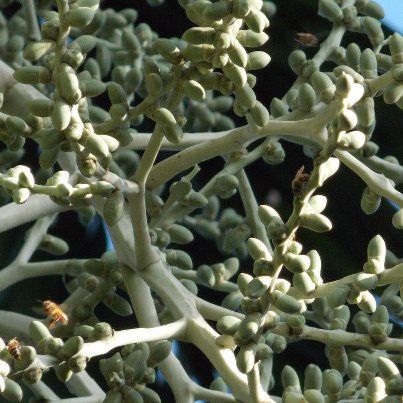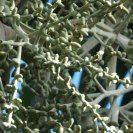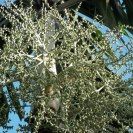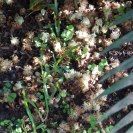How I Got Started
I started Butterfly gardening many years ago. My yard has been a progression over the years, and has made many transformations. Twenty years ago I experienced Hurricane Andrew. My yard and house were destroyed. We decided not to replace the pool screening and open up the backyard and put in some landscaping. That was the official beginning of my love for gardening in South Florida. I added a beautiful water garden years ago, and have been adding host and larvae plants for pollinators, mostly for the butterfly, for as many years as I can remember. I had my yard certified as a Natural Habitat, through the National Wildlife Foundation. To have a natural habitat you need to provide and meet certain requirements: 1. Provide a food source, 2. Provide a water source, 3. Cover, 4. A place to raise young. I try not to use any pesticides in my yard. I vermicompost and recycle as many of my food scraps as possible. If I had more land I would have a huge compost bin to recycle all my yard cuttings. Basically, I try to lessen my carbon footprint on this earth. In my own little world or backyard I try to provide an ecosystem in my water garden, provide birdbaths, birdfeeders, hummingbird nectar sources, feeders, puddling areas, host plants and nectar plants for butterflies and other pollinators. I am hoping to raise everyone’s awareness of the importance of saving our Butterflies, Blooms & Bees. Without them our world and food source will be in trouble. I hope you all enjoy my journey. I am not a Master Gardener, or Master Beekeeper, an Entomologist, or Journalists. I am simply a Backyard Gardener who is trying to lessen her Carbon Footprint of this Earth.
I hope you enjoy my blogs.
Friday, August 31, 2012
Pretty Orchids in my Garden
Thursday, August 30, 2012
The Saga Continues Again.....
After my bees stung the yard guy and the pool guy I decided to re-queen my hive with a nice Italian queen. It was perfect timing because I made a very nice split from hive number one today. I was able to take 12 bars of honey, nectar, and different stages of brood. It is important when splitting a hive so late in the season to make sure that it is large enough with enough pollen, nectar, and honey stores to sustain the winter. Although in Florida we are lucky because we don't have very hard winters. Sometimes we don't have winter at all!! Soon we should have a very good nectar flow happening again when the Brazilian Pepper starts to bloom.
I wanted to do this divide and experiment to see if I notice a change in temperament with this new queen. Italian queens are supposed to be very gentle, good honey producers, although more prone to robbing. I should know in about three weeks or so. Hopefully the hive will accept the new queen well. I have never ordered a queen before. I usually allow my hives to re-queen themselves. I have mixed feelings about buying a queen that isn’t local. Allowing the hive to re- queen itself is actually better to do because the queen mates with feral or local drones. A nice feral hive is more resistant to disease and more acclimated to our local environment. The down side to this is that the hive may have some AHB within their genetics. There is supposedly a greater population of AHB south of I-4, according to Dr. Kerns from the University of Florida. That has been my concern when working the hives, especially since they have been eliciting such aggressive behavior. Since this is my first year as a Florida beekeeper, I am not sure if all bee colonies become aggressive when they are queenless, but I know mine do and I cannot risk the safety of others.
I had never installed a queen into my hives before. Inese and I decided to cut a little area out of the comb with enough room on top for the bees to eat the candy and release the queen. Hopefully that will work well. My bees looked very interested in the new queen. I will be out of town for the next few days moving my youngest son into a new apartment as he is starting his second year of college. This distraction is good, otherwise I would be watching the hive like a hawk and hoping all is going well. It is important to leave the hive alone for at least 5-7 days after installing a new queen. When I return I will go back into the hive to see if they accepted the new queen. I hope so, she looked like a very nice queen.
With this split I will now have 5 TBHs. Not bad for the first year of beekeeping!!
Sunday, August 26, 2012
The Saga Continues
 |  |
 |  |
The bees seem happy in my yard. If those are not my exact bees at least I am providing enough nectar and pollen sources to keep the foragers happy.
I went back into my hives and they are looking very good. I need to split my 4th hive again. The queen in that hive is so productive. Her laying pattern is amazing!! I feel like I am raising a “box of brood.” That hive doesn’t produce a lot of honey but has allowed me to make several divides this year. As I inspected hive #3 I found a ball of bees. My mentor Inese was with me and she thinks they were balling the queen. We did find eggs, larvae, and capped brood present in the hive, but we would expect to since they were balling her as we entered the hive. This behavior from what I have read is very typical of Africanized Bees. I need to go back into that hive in a few days to see if there are queen cells present then I will know for sure whether it is queenless or not.
The bees were very gentle the other day. I didn’t receive any stings, which was greatly appreciated. However their behavior lately has been extremely irritable. As a beekeeper I try to understand what might be making them irritable. Their hives are not over crowded, they are not honey bound, but two weeks ago hive #2 was queenless with numerous queen cells present. Now hive #3 may be without a queen, if in fact they were balling her. Hive #4 has room in the brood area but the hive is almost full and needs to be split. The nectar flow in July and August is not good. All these examples can make bees irritable. I know my bees do get aggressive when they are queenless because they have chased me around the yard. Last week they stung my pool guy and this week they stung the yard guy several times, enough that he needed to go to the clinic. From what I could find out he is ok but my yard men are not coming back until I get rid of the bees. My husband is concerned because he doesn’t want the bees harming anyone, I mean, I could have died a month ago from my anaphylactic reaction and we cannot afford to have anything happen to anyone either. So right now I am very upset because I really do not want to get rid of my bees. My beekeeping started because I wanted to help the bees but I can also honestly say that I enjoy all aspects of beekeeping from taking care of the hives, to all the wonderful by-products the hive provides.
I talked to my mentor Kate out in Santa Fe Saturday morning. We decided that this might be the perfect time to requeen the hive. Since I need to spilt hive #4 this week, I could get a nice Italian queen instead of allowing that hive to make a queen, and then I might be able to see if I notice a difference in temperament. If I do I may actually requeen all the hives except hive #4 since that queen is my best laying and strongest hive. I know that a strong feral hive is the best, more resistant to disease and pest, more acclimated to my environment. Having aggressive bees doesn’t exactly make my beekeeping hobby enjoyable. As Kate has said to me “Life is too short to have mean bees.” I do not need to be worrying about the safety of myself or others. So I have decided that getting a new queen might be the answer. I guess time will tell…. Hence the saga continues…. Wish me luck!
CLICK HERE
Or Visit My Etsy Shop:
CLICK HERE


